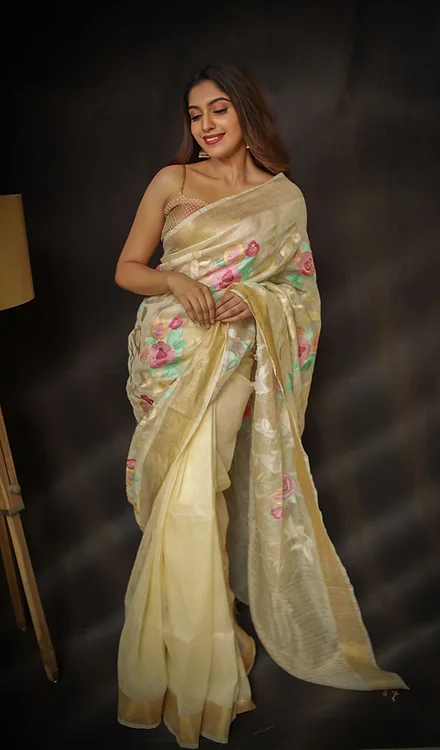What to dress as a guest to an Indian wedding?

Another invitation to a wedding making the bells ring? We can already sense your enthusiasm, and why not! Indian weddings are, after all, among the most fun and exciting events to attend! These festivities are among the most lavish and priceless occasions, with a lineup of vibrant rituals and lengthy social hours dressed out in the finest Indian wedding attire.
As a wedding guest, the excitement of attending the ceremony as well as the pre- and post-wedding events may quickly brighten you up. But regardless of whether it’s your closest friend’s wedding or that of a colleague, the question always leaves you perplexed:
What should I wear to the wedding events?
With the cultural standard of wardrobe ostentation and social presentation aspects, it’s always advisable to have a well-planned wardrobe as a wedding guest. Each gathering during an Indian wedding has a unique significance and differs in ambience, necessitating the need for various dress rules. You must thus step up your efforts to select the attire for your wedding party.
You may read down for a comprehensive description of each ceremony to see how this guide will help you plan the appropriate dress for every Indian wedding occasion!
Shop now for the latest collection of sarees online in India.
Guest outfit suggestions for weddings:
What is the ceremony’s attire theme? Should you choose a stylish western designer gown or a traditional Indian silhouette? The majority of us who go through these cognitive processes have a lot to weigh, including social standing, ambient factors, and personal preferences.
It is preferable to attend an Indian wedding dressed in cultural clothing. Whether you have roots in India or come from anywhere else on the planet. The most popular festival outfits are lehenga cholis, sarees, and salwar suits. However, depending on the community culture, the design and specifics may change.
Weddings in North and West India are frequently opulent affairs. So keep an eye out for really ostentatious items like silk sarees in vivid rani pink and brocade lehengas with shiny golden buttis. For these occasions, heavy crystal-studded necklines and bulky embellishments are preferred.
Weddings in South and East India are rather low-key. Women take delight in donning traditional weaves like Baluchari sarees, Tussar silks, Kanchipuram silk sarees, Pattu sarees, and various types of silk and silk mixes. Gold jewelry that has been expertly handcrafted is another essential component of festive dress. However, it is not compulsory to wear a saree. You may choose between a basic georgette suit with a designed dupatta or a stylish silk salwar suit.
Similar apparel is required for the Islamic nuptial ritual known as nikah, with a few minor color and silhouette modifications. For the ceremony, sharara suits, anarkali suits, and indo-western lehengas in shades of green, gold, and black are appropriate. For a Nikah ceremony, black clothing is permissible, unlike to the majority of other groups.
Unless you really want to adhere to their customs. The most of your clothing will have nothing to do with the community. Otherwise, you can attend a South Indian wedding in a sharara suit and a North Indian wedding in a Kanchipuram silk saree. The major requirements are that the clothing be conservative and traditional. Avoid plunging necklines and other features that expose too much flesh.
Colors for the occasion
Both ethnic clothing and the atmosphere during Indian weddings are overloaded with color. You have the freedom to indulge in a variety of palates at these times. You can choose any of your favorites, from vivid pinks to glittering greens and mystifying blues, or the full range, unless there is a dress requirement or color theme.
However, the bride is typically the wearer of heavy red or maroon sarees or monochromatic red or maroon lehengas.
Pastel and neutral color schemes with a softer feel are also suitable. Choose a taupe sequined lycra saree for a party at twilight, and a pastel peach cotton silk saree for a ceremony throughout the day.
Post-wedding functions
The bride changes from Miss to Mrs. at this point, and the family members are exhausted. But the fun doesn’t stop there! After the wedding reception, the bride bids her parents’ family goodnight and returns to her husband’s home.
For this tradition, a Gujarati bride often dons a Gharchola (also called Gruh-Pravesh by some communities). The Muh-dikhai is another post-wedding event when the bride initially interacts with her husband’s extended family and social network.
Smaller Indian cities hold these rites on a bigger scale, but the fast-paced metropolitan lifestyle has caused many of these ceremonies to be merged or just omitted. However, a semi-formal salwar suit will allow you to attend the event. You may also play around with your appearance by selecting a casual, comfortable fusion attire!